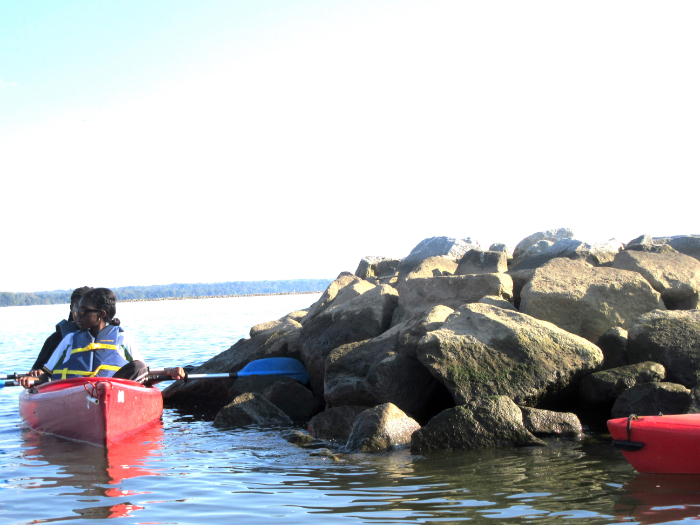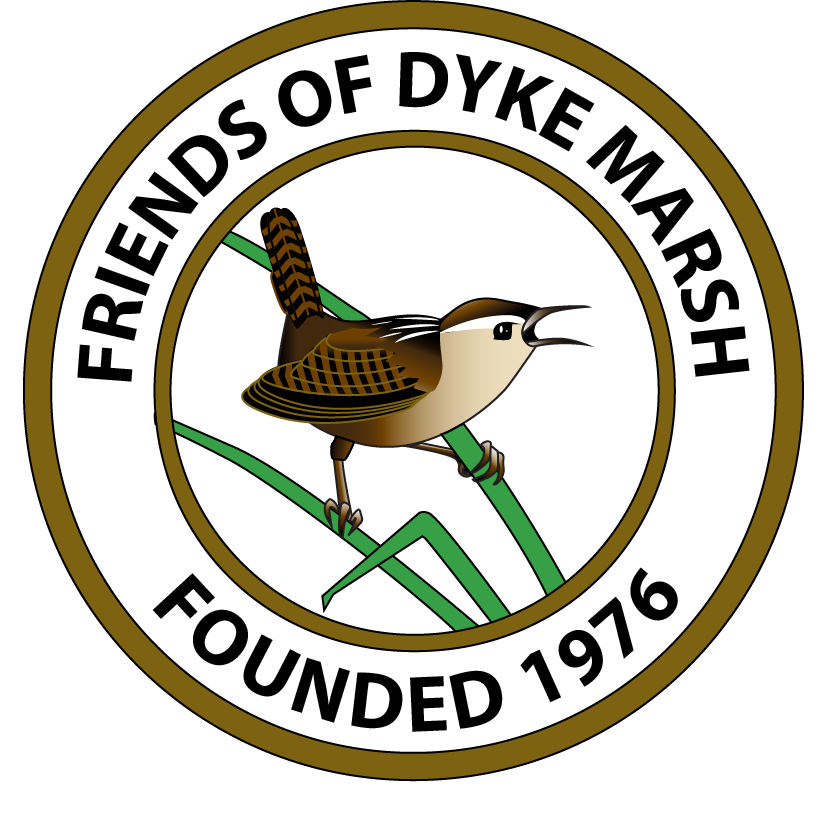On September 20, 2023, 40 students from Catholic University’s School of Engineering visited Dyke Marsh to learn about the breakwater and sills completed in 2022 to stabilize and restore Dyke Marsh.
Several members of the American Water Resources Association, National Capital Region, organized the event and Carol Ohl and Chuck Frey, from the Army Corps of Engineers (ACE) Baltimore District office described their work to design the structures.
140 Acres Gone; Stopping More Loss
Brent Steury told the group that Smoot Sand and Gravel mined 100 acres of the marsh from 1940 to 1972 and erosion took away an additional 40 acres. He said that the Potomac River is rising four millimeters a year. Park Service staffers are measuring both land subsidence and sediment accretion and hope the accretion rate will keep up with sea level rise and subsidence so that the marsh survives. Steury is the Natural Resources Program Manager of the George Washington Memorial Parkway, National Park Service.
The breakwater replicates a former natural promontory, removed by the dredgers, that extended into the river and protected the marsh, Steury explained. It and the five sills are designed to break wave energy and redirect sediments into the wetland.
Chuck Frey, an ACE engineer, told the students that the project’s design required several specialties, including geotechnical, civil and hydrology engineering. Engineers had to determine, for example, what type and weight of rock to use for the structures, rocks that could survive storms while positioned in the river’s “soft muck.”
The southern part of Dyke Marsh is 2,500 years old, Steury said. For more information on the stabilization and restoration project, see our Restoration page.
| The Corps of Engineers built a breakwater to replicate a former promontory and five stone sills for further protection. |
![[Photo] Breakwater and sills replicate a former promontory and diminish erosion](/images/3024_COE_built_breakwater_and_sills_to_replicate_a_former_promontory_and_provide_further_protection_-_medium.jpg) |
| All Photos by Glenda Booth |
| Park Service biologist Brent Steury reviewed the marsh’s history. |
![[Photo] Park Service biologist Brent Steury](/images/3451_Park_Service_biologist_Brent_Steury_reviewed_the_marsh_history_-_medium.jpg) |
| The students paddled out to the sills and breakwater to examine the structures. |
![[Photo] Students paddling around sills and breakwater](/images/3475_Students_paddled_out_to_the_sills_and_breakwater_to_examine_the_structures_-_1_medium.jpg) |
![[Photo] Students paddled out to the sills and breakwater](/images/3449_Students_paddled_out_to_the_sills_and_breakwater_to_examine_the_structures_-_2_medium.jpg) |
 |
![[Photo] Students examining sills and breakwater structures](/images/3461_Students_paddled_out_to_the_sills_and_breakwater_to_examine_the_structures_-_4_medium.jpg) |
| The sills are separated by openings so fish and other wildlife do not get trapped. |
![[Photo] Sills are separated by openings for fish and wildlife movement](/images/3026_The_sills_are_separated_by_openings_so_fish_and_other_wildlife_do_not_get_trapped_-_2_medium.jpg) |
| Chuck Frey from the Army Corps of Engineers described some of the engineering challenges of the project. |
![[Photo] Chuck Frey](/images/ChuckFreyACE_medium.jpg) |

